| Photo of the month – July 2022 |
[German version] |
Once upon a time there was an end wall …
And it tried to restrain a load
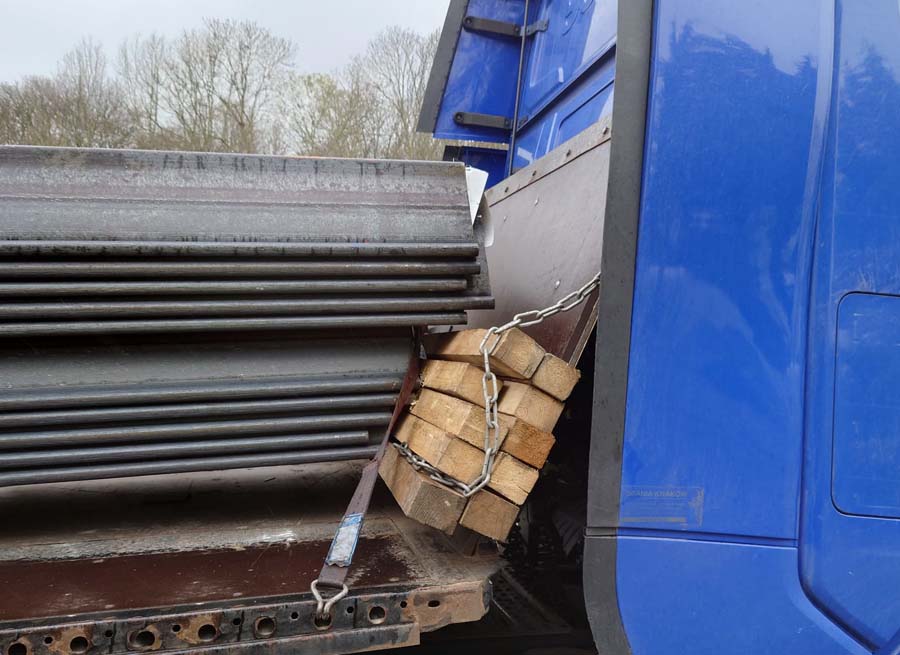
Figure 1 [VN24, Axel Ruch]
The story is quickly told: A full load of sheet piling weighing 25 tonnes, stacked with spacers. Anti-slip material was used in places, but not everywhere. When the driver braked in normal traffic conditions, this was sufficient to cause the load to slip forward a good 2 meters until the end wall made a fair attempt to slow it down, although the end wall itself bent considerably in the process.
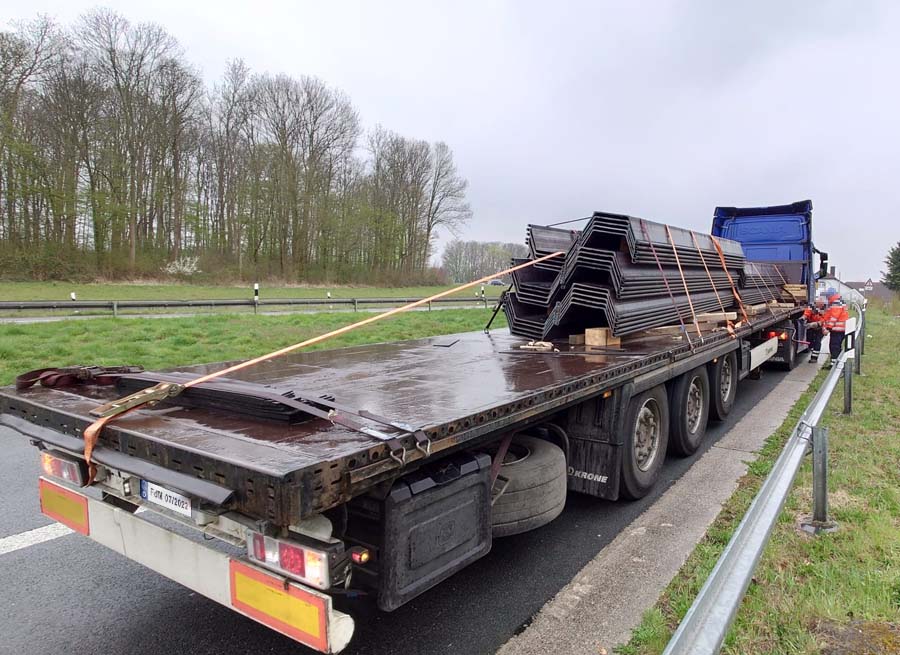
Figure 2 [VN24, Axel Ruch]
Figure 2 gives a pretty good idea of the distance the load slipped. The belt running lengthwise was attached later in an attempt to bring the load back a little and move it away from the end wall.
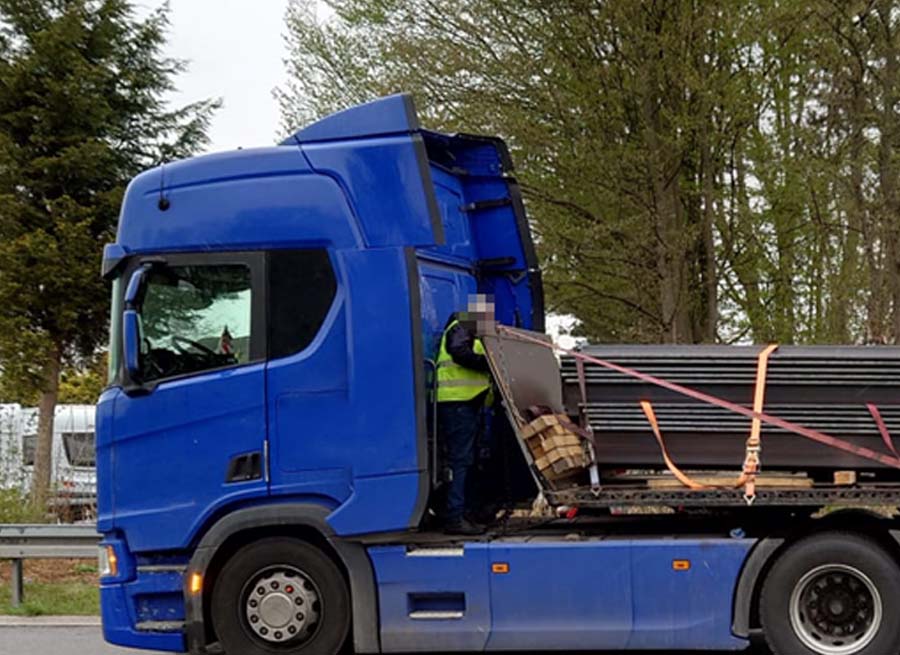
Figure 3 [VN24, Axel Ruch]
A second belt was also used to bend the end wall directly back a little. We are told that the compressed air hoses were pulled off and that the end wall, bent as it was, would not have cleared the cab when negotiating a bend.
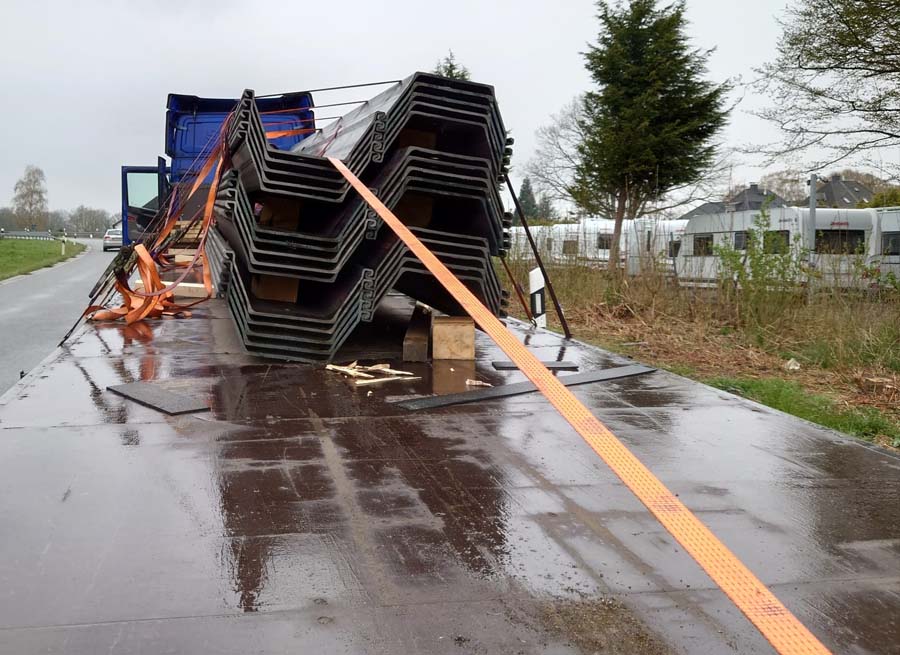
Figure 4 [VN24, Axel Ruch]
The load was secured with tie-down lashings. It was no longer possible to determine exactly how many had been used. We are talking about 25 tonnes of steel, so securing the load in this way is a rather dubious proposition, as it requires an enormous amount of effort.
- To start with, let us assume that anti-slip material was employed ideally, both below and above all the dunnage used (which is, of course, purely an assumption that bears no relation to reality).
- Coefficient of friction μ of 0.6
- And that the packages are firmly secured to each other (in one way or another).
- Required securing force to be delivered by the tie-down lashings: 0.8 minus 0.6 = 0.2.
- 20 % of the load corresponds to 5000 daN of weight force, which is the shortfall in securing force.
- At a coefficient of friction μ of 0.6, this is (5000 : 0.6) 8334 daN of vertical pre-tensioning force that would have been needed to provide this missing securing force.
- With one belt providing an STF of 500 daN (we will use the full 500 daN, multiplied by 2 because the angle is good, which is the guideline in EN 12195-1), the load would have required 9 belts, always assuming that the anti-slip material had been properly used everywhere to allow friction to be transfered throughout, and that the packages were firmly connected to one another.
- We should note that it was not possible to place anti-slip material between the sheet pilings and that their coefficient of friction is questionable (mill scale on mill scale).
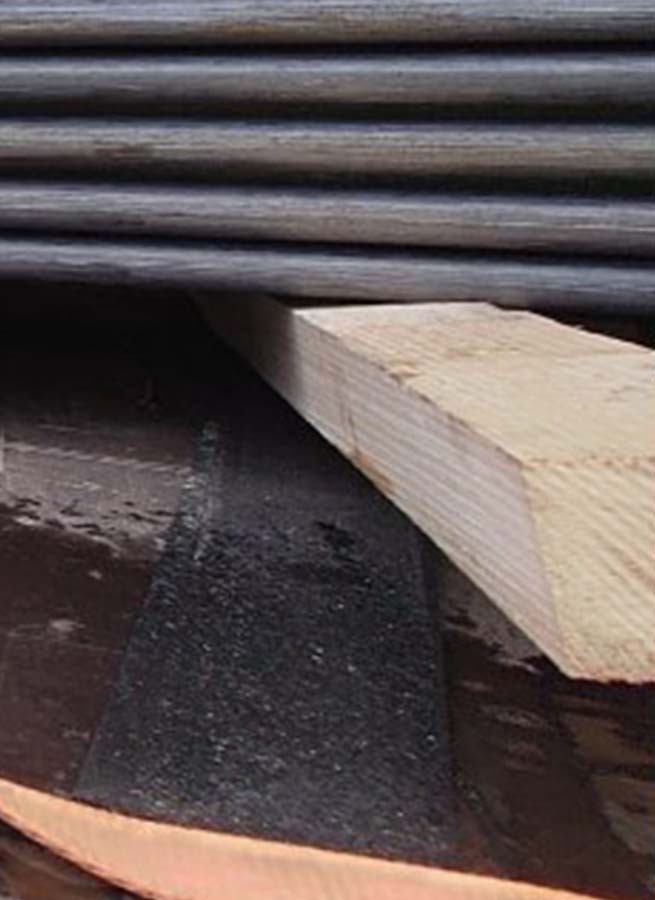
Figure 5 [VN24, Axel Ruch]
This dunnage had anti-slip material underneath it, but there was none between the dunnage and the sheet pilings above. Because the pilings are only supported along a single line on the dunnage, the anti-slip material should be heavy duty.
The load slipped forward more than two meters, twisting the dunnage somewhat, but the anti-slip material did its job.
How to secure the load properly:
This load can be secured perfectly well:
- We would always use anti-slip material between the friction pairs lumber / sheet piling and lumber / loading bed.
- Each stack of the load is secured to the sides with four loop lashings (two from each side). These loop lashings have such a high vertical component that they also deliver the required minimum securing force.
- Both packages of the first load unit are secured together to the front using two loop lashings. These loop lashings are of course protected from the sharp edges of the sheet pilings by means of protective sleeves.
- The lashings are arranged in such a way that they cross in front of the load stack.
- In the case of the rear load stack, the lower two packages are secured against forward movement using two loop lashings. Again, these are appropriately protected and crossed in front of the load stack.
- The top package is separately secured against forward movement by loop lashings attached in the same way.
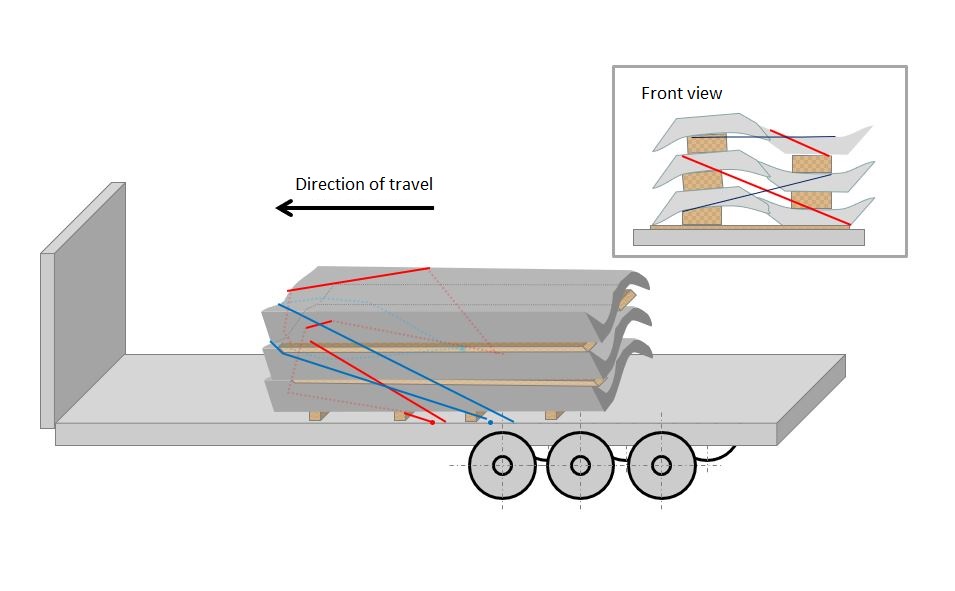
Diagram 1 [TIS]
This diagram shows how the belts are arranged for the pairs of packages.
Calculating the securing required:
- We shall assume a weight of 5 tonnes per package.
- The front stack would therefore weigh 10 tonnes and the rear stack 15 tonnes.
- If the loop lashings to the front are long and arranged at a shallow angle, there is barely any loss for the angles.
- Because we do not know the angles, we shall subtract a safety margin of 20 % from the securing force and are left with 6400 daN of securing force.
- Even if we assume a coefficient of friction µ of 0.3 for mill scale on mill scale, we only need 5000 daN of securing force for the front load stack. But the loop lashings provide 6400 daN.
- In the case of the rear stack, we shall secure the top package separately against forward movement using two loop lashings and the two bottom packages together using two loop lashings.
- The surplus securing force is even greater here, so we shall spare ourselves a calculation. But we are certainly on the safe side.
- The securing method we propose requires 14 belts and six protective sleeves to secure the load well.
Your load securing columnists wish you a relaxing summer with the refreshing rain we all need.
Back to beginning
